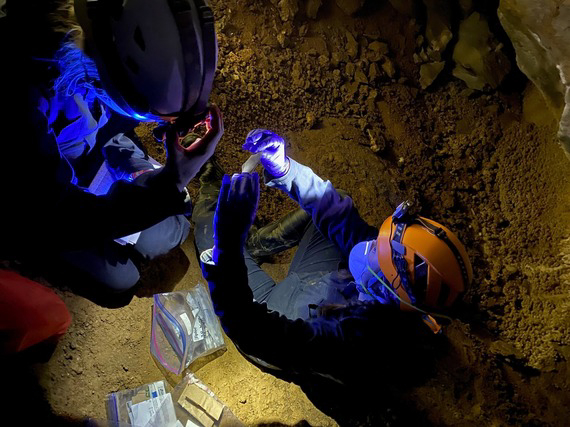
|
Montana Fish, Wildlife & Parks has confirmed the presence of the fungus that causes white-nose syndrome on two bats captured at Libby Dam in Lincoln County.
The detection at Libby Dam is a concerning development in the spread of the disease for a couple reasons. This is the first detection west of the Continental Divide in Montana. Secondly, Libby Dam is one of Montana’s largest known maternity roosts.
A recent detection in Bonner County, Idaho, also suggests the fungus is progressing from both eastern and western fronts across the region.
“Finding the fungus here is concerning because both Yuma myotis and little brown myotis, the species roosting within the dam's Visitor Center, are susceptible to white-nose syndrome,” said Shannon Hilty, FWP’s state bat biologist.
“This reinforces the importance of monitoring populations to track trends as well as working to implement management actions that will either mitigate the effects of the disease or aide in population recovery.”
There are no public health concerns associated with white-nose syndrome in bats.
FWP staff have been monitoring and sampling bat populations across the state to track the spread and impacts of this disease. Work to date has suggested declines in Montana’s susceptible bat species in the eastern half of the state due to white-nose syndrome. This year’s sampling effort included 19 sites, the majority of which were located in the western part of the state where the fungus had yet to be detected. FWP is still awaiting results for some additional sites.
Libby Dam hosts a large mixed-roost of Yuma myotis and little brown myotis bats. While no visible symptoms of the disease were observed, many of the bats appeared dehydrated. FWP staff were unable to identify the precise species of affected bats during this latest survey due to overlapping traits and high social activity, known to impact acoustic ID, but historical data suggests the majority are likely Yuma myotis. Both species face heightened risk from white-nose syndrome, which has devastated bat populations across North America.
First documented in New York in 2006, white-nose syndrome has since spread to 40 states and eight Canadian provinces, killing millions of bats and causing declines upwards of 90-98 percent in some populations in eastern North America.
The fungus, Pseudogymnoascus destructans, which causes the disease, was first confirmed in Montana in 2020 in samples from bridges in several eastern Montana counties. The first confirmed case of the disease itself in Montana came about a year later, in spring 2021 in eastern Montana.
The fungus attacks bats during hibernation, disrupting their energy balance and often leading to starvation, dehydration, or death.
“Bats play a vital role in Montana’s ecosystems, consuming vast amounts of insects and supporting healthy forests and agriculture,” said Hilty.
“A disease like this can damage our ecosystems, our economy, and ultimately, have large impacts on the wildlife and people that reside within our state. Protecting bats from white-nose syndrome is critical.”
What can the public do?
Cavers, climbers, and recreationists that visit areas with roosting bats should remove dirt and mud from shoes, gear, and clothing before leaving a site; bag these items to take home; and clean items promptly. People that visit multiple areas where bats might reside should follow decontamination protocols to help stop the spread.
Anyone who sees a dead or sick bat in wintertime or spring, when bats should be hibernating, should call a local FWP office for further guidance. Never handle bats, whether alive or dead.
For more information about white-nose syndrome, visit www.whitenosesyndrome.org.